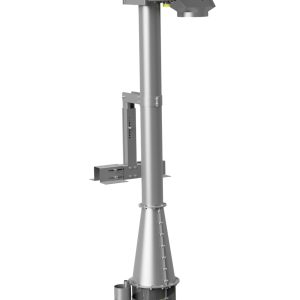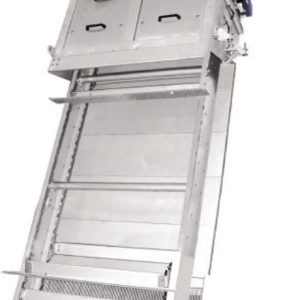Description
Noggerath® screening press NSP – simple and cost-effective processing of screened materials
The Noggerath® screenings press NSP is a robust unit designed to effectively meet the challenges of municipal and industrial wastewater treatment in combination with pre-treatment screens and grates. It includes transport, dewatering, compaction and safe disposal of the treated material. They are not only environmentally friendly, but also an economical and cost-saving way to handle sieved materials.
Benefits
- Reduction of operating costs. Replacement wear profiles in the press area and a screw made of wear-resistant special steel reduce wear and operating costs.
- Ease of maintenance. The modular design and good accessibility to all parts ensure that maintenance is easy and efficient.
- Efficient drainage. Direct contact between the auger and the slotted bottom of the drainage area ensures efficient, clog-free drainage.
- Best drainage performance. The adaptable drainage bottom and the extended feed zone allow the best possible drainage performance, adapting to the local conditions.
- Flexibility and adaptability. Thanks to their modular design, these scrubbing presses are easily adaptable not only to new projects but can also be integrated into existing wastewater treatment plants.
- Efficiency and sustainability. Up to 80% reduction in the weight of untreated waste and up to 45% reduction in the dry solids content of the sieved material ensure that the discharged materials meet high environmental standards.
The Noggerath® screenings press NSP has the following options
NWP/ NSP-FF- Standard design, feed and press zone bottom made of flat profile with elongated meshes for coarse and fine screening (>2 mm) with normal water content in the screening medium.
NWP/ NSP-PF- Inlet zone with perforated sieve bottom and pressing zone made of flat profile bottom with elongated meshes for fine screening (>2 mm ≤10 mm) and higher water content in the screening medium.
NWP/ NSP-PW – Feed zone with perforated screen bottom and press zone with wedge wire screen bottom for fine screening (<=2) with low water content in the screening medium.









